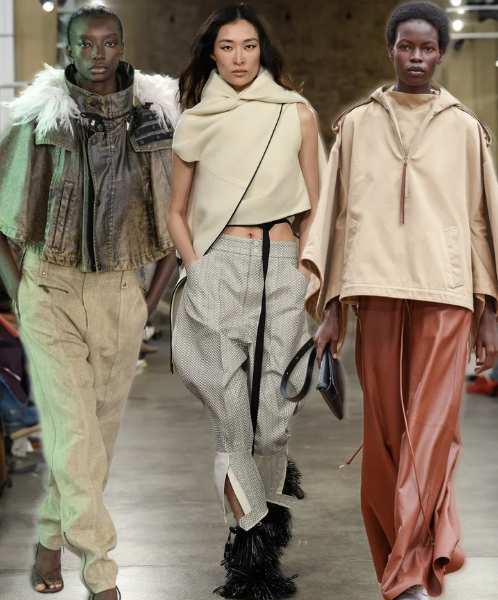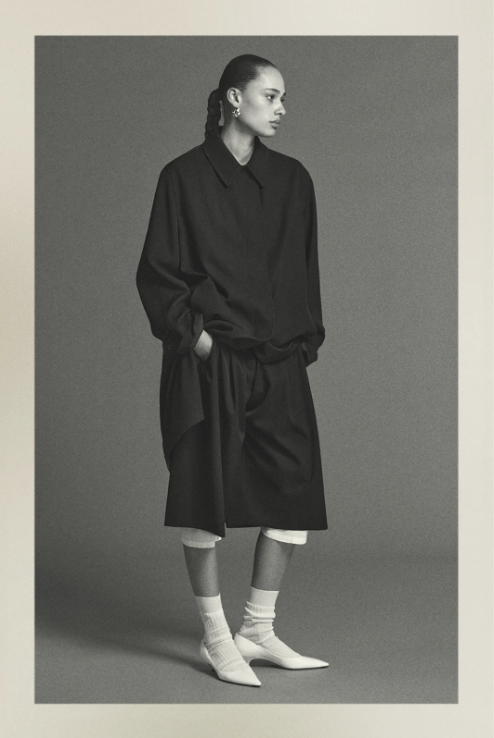That Sweater is Not Just Blue: How Fashion Dictates Taste (and Why You Don’t Even Notice)
The Devil Wear’s Prada, 2006
You didn’t choose that aesthetic. That aesthetic chose you.
By the time you saw the “boho chic” look trending on TikTok, the trend had already moved through the system: from forecasting deck to runway to meticulously curated pinterest moodboards, and finally, to your algorithmically engineered for you page. Money was spent. Samples were pulled. You liked it before you even had time to ask why. Fashion has always carried large connotations of influence, but in today’s digital landscape, it’s becoming something closer to an auto suggestion. What you wear no longer reflects mere “personal taste”; it reveals how well you’ve absorbed what was predicted, packaged, and served to you a year ago.
Tod’s resort 2025
Those cute trousers you just added to your cart? They're not just brown, nor are they simply “latte-girl coded”. They're 2025’s Pantone-confirmed "Mocha Mousse," spotted across multiple major runways, nodded to by a dozen trend services, referenced in Rhode Beauty’s limited edition drops, quietly embedded in hundreds of TikToks disguised as “closet clean-outs.” The point is: you think you’re making a choice, when you’re really just arriving at the tail end of one.
The Calendar is Preconceived
To understand how taste is manufactured, you have to start with the clock. Fashion doesn’t move in real time, it moves on an internal calendar that runs seasons ahead; Spring/Summer 2026 is being moodboarded before Fall 2025 even hits shelves. Designers show collections six months in advance (more if you count couture, as we dissected here) and trend forecasting agencies like WGSN or Fashion Snoops are hired to predict what colors, silhouettes, and materials we’ll all be “spontaneously” drawn to next year. And they’re usually right. Why? Because the industry listens. Retailers design around it, magazines echo it, stylists, merchandisers, and brand teams all fall in line. By the time it hits your feed, it’s already been approved, filtered, and baked into the culture. So when the same mesh top keeps showing up on your feed, it’s not a coincidence. It’s a kind of coordination.
Courtesy of Refinery29
Taste, But Make It Predictive
Taste used to be slow. You developed it through subcultures, lifestyle, the music and film your parents enjoyed during your childhood. Now it’s predictive. The algorithm guesses what you’ll like and delivers it on repeat until you internalize it. As a tastemaker in our audience pointed out, “We’re not curating, we’re just copying.” It’s not that you don’t like the trend. It’s that you haven’t been given the space to wonder why you do. And that’s the trick: when everyone’s “taste” is trending at once, it stops feeling like taste at all. It’s performance. It’s mass consensus disguised as individual choice. And fashion, ever the cultural mirror, is moving faster than we can even ask, does this feel like me or does it just feel like content?
The Invisible Machinery of “Cool”
ITrickle-down fashion used to be more simple, starting at the top; couture to ready-to-wear to fast fashion. Now it’s more of a feedback loop: trends emerge from everywhere, but only survive if they’re picked up, filtered, and platformed by the machine. That lifestyle influencer on TikTok might go viral for a look, but that look won’t go global unless it fits into the industry’s bigger moodboard. And most of those moodboards were designed months ago, by a creative director you've never heard of, in response to research you’ll never see.
Articulated through discourse in our comment section: “Taste today is shaped more by access than actual interest.” When the algorithm only shows you what’s been deemed viable, visible, and shoppable, real taste, the kind formed through discovery, not delivery, becomes harder to access.
The Row RTW Spring 2026
So What Do We Do With This?
Well you could panic. Or you could pause. Maybe real taste in 2025 isn’t about dodging trends entirely, it’s about slowing down long enough to know why you’re drawn to something. It’s about asking who decided something was “in” before you did. Or resisting the pressure to perform your preferences on command. Because yes, those trousers are just trousers. But they're also a study. A product of a system. A signal to someone, somewhere, that the machine worked. And maybe the next truly radical fashion trend is simply not participating. Just because it fits doesn’t mean it's yours.



